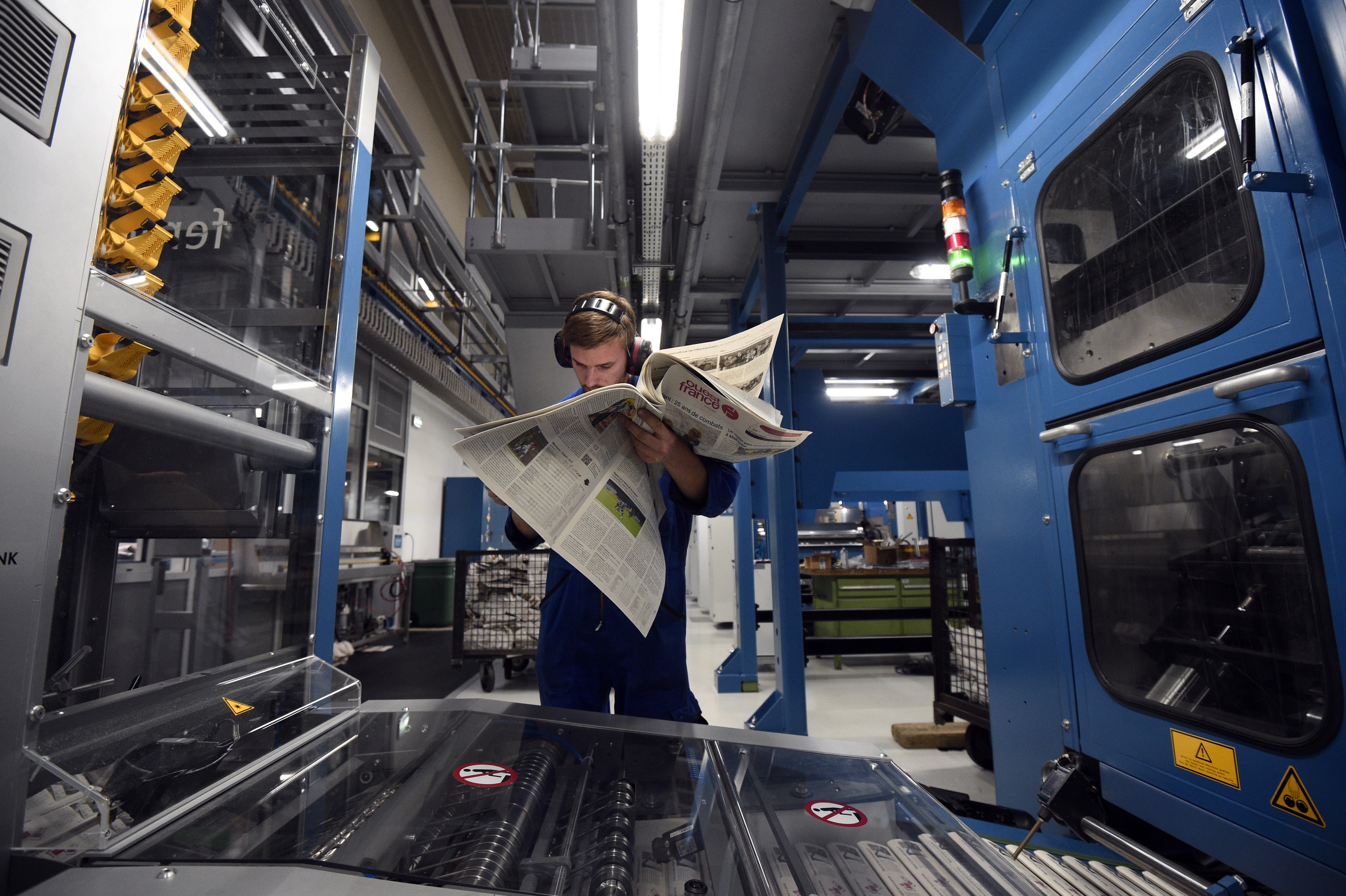 Damien Meyer/ AFP / Getty Images
Damien Meyer/ AFP / Getty Images
It’s fashionable to dismiss the impact of a newspaper these days, but let me let you in on a dirty little secret that newspaper competitors don’t want you to know: Nobody can touch the impact of a newspaper. Nobody.
Whatever stories you see on TV being delivered by today’s new generation of news presentation probably have their roots in a newspaper. Many of the stories you hear on radio and TV started from a newspaper.
And a lot of people in the radio and TV business have dents in their forehead from hitting their heads on the desk, lamenting that the same story in a newspaper this week — a story they might have done months or weeks ago — prompted some state legislator to call an immediate hearing to discuss the same issue he/she ignored when it was presented in another medium months earlier.
How this happens is nothing short of a miracle, and this week, Popular Mechanics documents it with a splendid piece tracing a day in the life of the New York Times.
The news desk is the center and the highest expression of the Times’ transformation from once-a-day newspaper to twenty-four-hour news outlet. It’s both the slowest and the fastest part of the Times operation—a place where Dicke can spend a substantial portion of the evening considering a single word while Dremeaux makes decisions in seconds.
Most of the Times’ editorial staff is spread throughout three floors of the paper’s headquarters, and news is on the third floor.
(The headquarters is at 620 Eighth Avenue, just off Times Square, which was named after the newspaper opened there in 1904. In 2007 the paper moved into a glass-and-steel structure down the street, an audacious addition to the Manhattan skyline.The new building is sleek and efficient—the window blinds rise and fall automatically based on the temperature inside.)
Some desks are covered in old newspapers, others are clean and empty, a reminder that the Times operates in a post-recession, Internet-saturated media landscape where it still employs more reporters than any other major newspaper but fewer than it once did. (In December the Times offered buyouts to one hundred newsroom staffers. Dicke took the offer.)
A studio in which a video crew films short clips for the website and mobile editions looms over the middle of the newsroom.
The news department gets the glory and most of the attention. But we applaud Popular Mechanics for including an important cog in the wheel: The person who rolls out of bed while the rest of us get our beauty sleep, jumps into a car whose transmission is on borrowed time, and throws a newspaper on the front step in exchange for about 10 cents.
Smith and Gordon load their minivan and deliver all 233 papers in about ninety minutes. “Nothing like the cold to make you do it faster,” says Smith, who’s wearing a leopard-skin sweater and navy-blue beanie.
On some blocks she and Gordon walk opposite sides of a street, tossing papers onto stoops, while on others they split up—Gordon carries an Ikea bag stuffed with papers as he walks down blocks with a high density of subscribers, while Smith drives sparser streets nearby.
The longest stop is the five minutes it takes Smith to deliver six papers to individual apartments in a nursing home. One customer has asked her to hit his door with the paper so he knows it has arrived. Another customer’s dog waits on the step and barks when the paper lands.
At this moment, hundreds of thousands of copies of The New York Times are flying out of people’s hands, a little action that starts a simultaneous morning ritual: A newspaper lands with a soft thud, and eventually someone opens the door and picks it up, reads it, and knows what is happening in the world.
Someday, this entire process will die. But that doesn’t mean we can’t appreciate it for the miracle it is.
